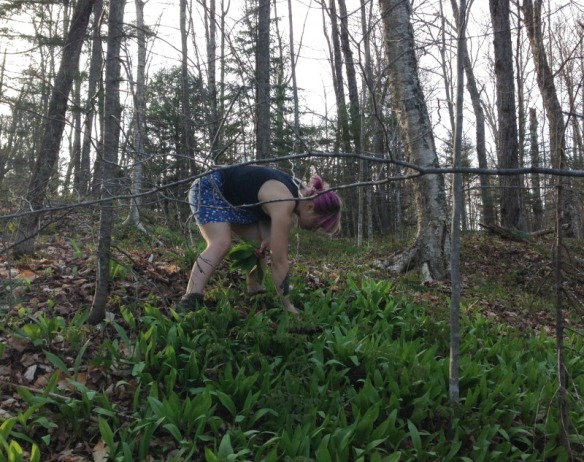Mangú is mashed plantains. Green plantains are starchy like a potato, so the dish is like mashed potatoes except that it goes particularly well with eggs and is very filling. For that reason, many people really like it for breakfast. It is a great side dish for brunch.
Plantains are an important food staple in tropical regions of the world because the trees fruit all year long and they are very high in potassium and other vitamins and minerals. They are versatile and can be eaten green, or ripe. They can be an appetizer, main dish, side dish or dessert. They can be mashed, fried, baked, grilled or added to other foods in many creative and delicious ways. My ex-mother-in-law taught me how to make it. Mangú is what they call mashed plantains in the Dominican Republic. In Cuba, they call it Fufú and in Puerto Rico it is known as Mofongo. There are many ways to make it, all of them, delicious. Sometimes pork is added. My mother-in-law’s version is vegetarian, made with lots of sauteed garlic, red and green peppers and onions.
I’d just seen the first ramps (wild leeks) at the Union Square Greenmarket. Truly a sign of spring, ramps feel like the first fresh leafy food to appear in the northeast that does not come from a greenhouse. I bought two bunches.
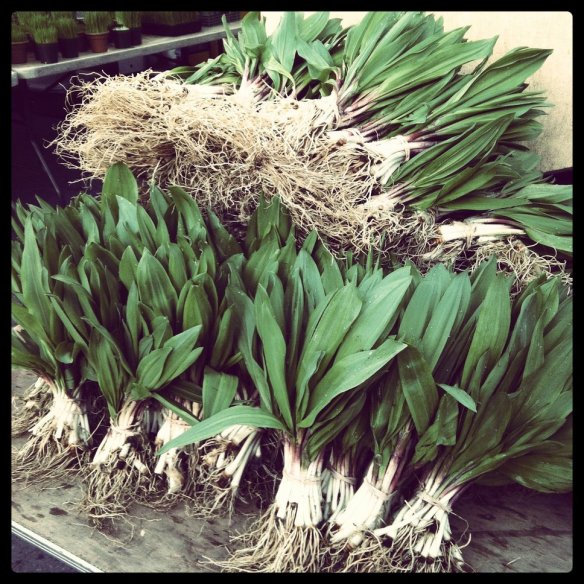
Oona decided to use the ramps for the mangú because onions are not her friend. Since she doesn’t like peppers either, the mangú was just plantains, ramps and lots of garlic. The flavor of the ramps is delicate so that the plantains were the star.
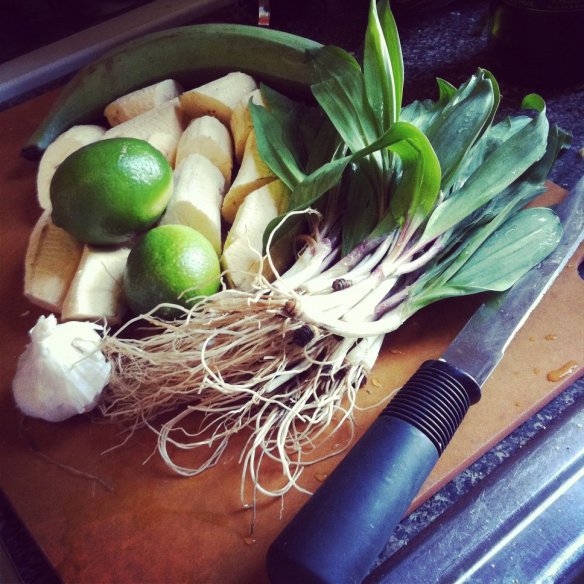
Here is Oona’s recipe for Mangú with Ramps
4 green plantains, peeled and cut into chunks about 3 inches long
1 lime or lemon
lots of garlic
1 bunch of ramps (about 2 cups chopped)
good olive oil to taste
salt and pepper to taste
Boil the plantains until they can easily be pierced by a fork (just like a potato) in salted water with a lime or lemon cut in half.
Chop the ramps (cut off the roots) and use both the green leaves and white bulb and mince your garlic. Sauté the garlic (don’t let it brown) and lightly sauté the ramps till the greens are wilted but still bright.
Drain the cooked plantain chunks and save some of the water. Mash the plantains, adding some of the plantain water to moisten. Add as much olive oil as you like. Add the sauteed ramps and garlic. Add salt and pepper to taste. Serve hot. If you have leftovers, reheat by steaming or microwaving with a bit of water to soften the plantain mash.
Serves six
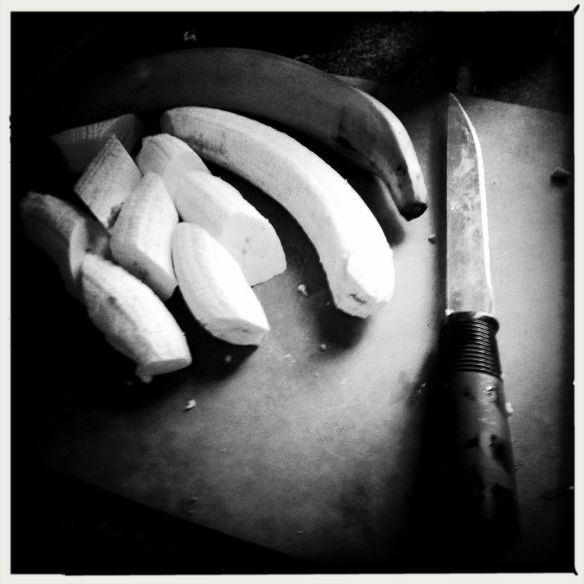
cut the plantains into 3 inch chunks for boiling
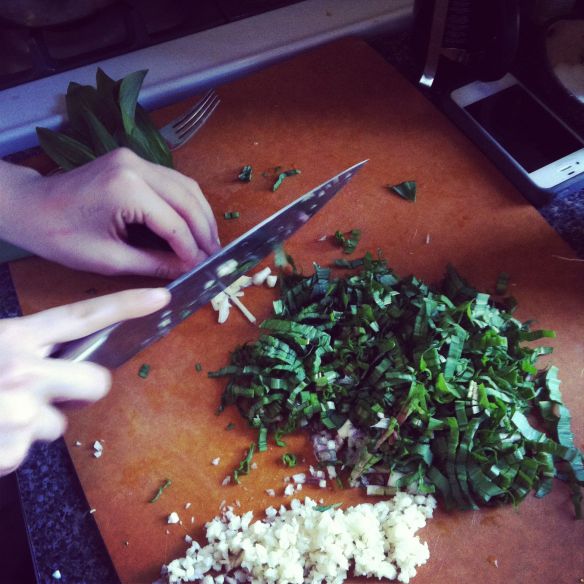
chop the ramps and mince the garlic

a healthy spring brunch: turkey sausage, eggs and mangu


